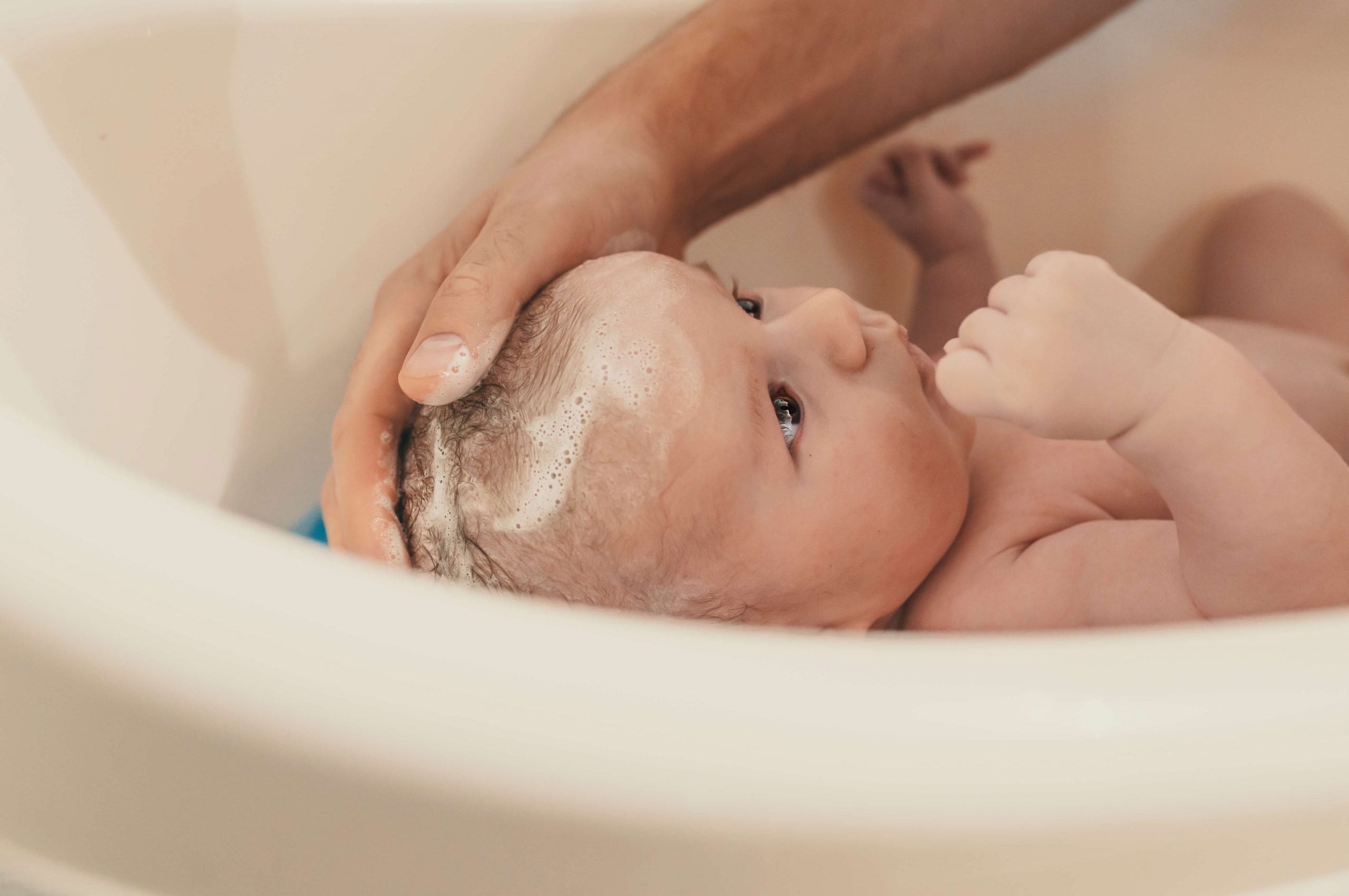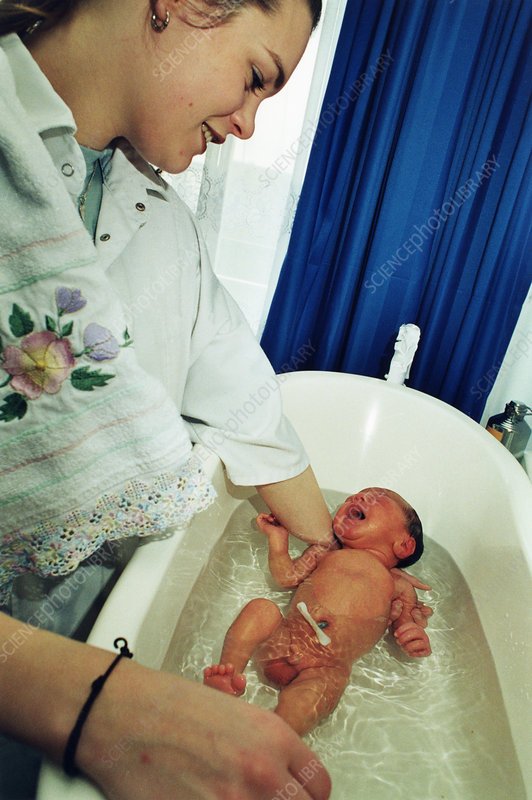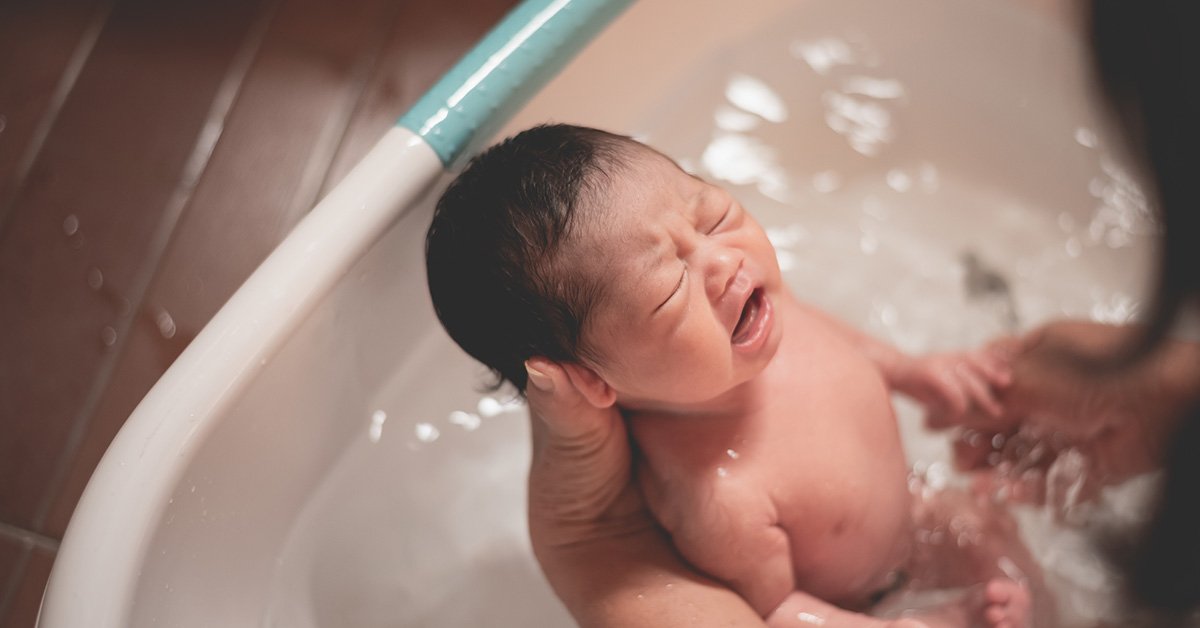How Often To Wash A Newborn According To A Pediatrician
Babies are so cute…but theyre also small and fragile and strange, which is why every aspect of caring for them can feel a bit intimidating, especially if youre a first-time parent. Naturally, you know the basics: Make sure the baby is fed, well-rested, cuddled and clean. But when it comes to that last part, you might have a couple questions. After all, there’s been a big personal hygiene debate going on ever since celebs like Ashton Kutcher and Kristin Bell started weighing in on how often they wash their kids. As such, you might be wondering how often to wash a newborn and, um, how to do it too. Good news: We spoke to Dr. Pierrette Mimi Poinsett, pediatrician and medical consultant for Mom Loves Best, and got the lowdown on what to do and how frequently you ought to do it.
Prepping For Bath Time With Your Newborn
- Establish a regular bath time routine
- Keep the room nice and toasty. A cozy 75 degrees-plus will work just fine.
- Gather all your necessities: Youll need two washcloths, a towel, a few cotton balls, a diaper, and a change of clothes.
- Start in a few inches of warm water. Keep the water at about 90 degrees. Swirl your fingers through the water to make sure there are no hot spots.
How To Dry A Newborn After A Bath
Heres how to wrap up your babys bath, including a bit about rinsing, drying and using lotion:
- Rinse well. Use clean, warm water for that final rinse cycle, holding your little one football-style, with the back of his head cradled in one hand, his body draped along your arm, and his head over the basin. Fill the cup with water and gently pour it over your baby’s head and then the body parts.
- Dry her gently. Next up, pat your baby’s skin with a soft dry towel. Be sure to thoroughly dry her bottom and any other areas where there are folds of skin. Chubby babies have lots of those!
- Go easy on the baby lotion. That beautiful and ultra-sensitive skin doesn’t need much, if any, in the way of lotions, oils or creams, though a little baby-safe lotion is okay. But avoid baby powders, which can irritate an infant’s breathing passages. If your practitioner recommends it , massage a hypoallergenic lotion into her skin after warming it in your palms.
- Diaper and dress. Slip on a fresh diaper and dress your baby in some clean clothes. If she needs a little soothing after the sponge bath, swaddle her up in a blanket, then get settled in for a snuggle with your clean, sweet-smelling baby.
You May Like: How Many Vaccines Do Newborns Get
More Laundry Tips For Baby Clothes
- To keep tiny socks from getting lost, wash them in a mesh lingerie bag.
- Fasten Velcro closures before washing them this will keep them from snagging other clothing.
- After each wash, look at buttons and snaps to make sure they remain securely attached.
Whether you’re dealing with baby laundry or the big stuff, life with a newborn is a little easier when you’re prepared. For helpful checklists and to-dos, don’t miss our planning resources for moms-to-beand try to take some of the pressure off yourself while you’re at it.
Whats The Best Detergent For Washing Baby Clothes

You want your familys laundry to be as quick and easy as possible. So youll be pleased to know you dont need specialist products to wash your newborns clothes. Simply choose a non bio detergent and softener that is gentle on sensitive skin like Fairys Sensitive Skin Dream Team: Fairy Non Bio PODS® and Fairy Fabric Softener.
Fairy Non Bio has been voted the number one laundry brand for sensitive skin* and the Pods give your babys clothes a gentle clean. The clever multi-compartment Pods contain gentle ingredients and mild perfume. Simply pop one in your washing machine drum before loading the clothes on top.
To give you added peace of mind, the Fairy Non Bio range has been awarded the Skin Health Alliance seal of approval, making it ideal for the most delicate of skin.
*Online panel of 3,433 women among which Fairy Non Bio detergent/softener was voted most often as the #1 detergent and fabric softener for sensitive skin.
Read Also: How Many Ounces Should A Newborn Eat
How To Wash Baby Bottles
This article was co-authored by Rebecca Nguyen, MA. Rebecca Nguyen is a Certified Lactation Consultant and Childbirth Educator. She runs Family Picnic in Chicago, Illinois with her mother Sue Gottschall, where they teach new parents about childbirth, breastfeeding and child development and education. Rebecca taught preschool through 3rd grade for 10 years, and she received her Masters Degree in Early Childhood Education from the University of Illinois in 2003.wikiHow marks an article as reader-approved once it receives enough positive feedback. In this case, 100% of readers who voted found the article helpful, earning it our reader-approved status. This article has been viewed 212,015 times.
Washing baby bottles can seem like an endless chore, so it may become tempting to skip proper cleaning. However, the proper cleaning of baby bottles is extremely important, as babies’ immune systems have not fully developed, making them much more susceptible to getting sick from bacteria in dirty bottles. To ensure your baby stays safe and healthy, start with Step 1 below for detailed instructions on how to properly wash baby bottles.
Where Can I Bath My Baby
Babies dont tend to care what theyre bathed in, as long as they have room to move around and the water is deep enough so they dont get cold. Baby baths are ideal because theyre portable, easy to empty and easy to clean. Some parents like to use the kitchen sink in the early weeks of their babys life before graduating to the big bath. You may like to use the big bath as soon as your baby is beyond the newborn stage.
Recommended Reading: How To Calm A Newborn From Crying
How To Wash Newborn Baby Clothes
A ritual many of us expectant parents go through is washing all the clothes, blankets and accessories that have piled up ahead of our little ones arrival. But where to start, and how do you know you are doing it right?
Weve put together this simple guide full of tips and tricks for washing your newborn baby’s clothes. We hope it helps let us know what you think or if you have any more questions!
Did You Know: Its Not Necessary To Wash Your Newborn Or Infant Every Day
Newborns and immobile infants dont get dirty often. Youll want to wash your baby two to three times a week maximum to avoid drying out their skin. Until your baby begins scooting, crawling, or playing with pets on the floor or other infants out in public a simple wipe down with a warm wet cloth in between baths is sufficient.
Also Check: What To Buy For A Newborn Baby Girl
How Often Should You Wash A Newborn
The answer to this question is the same regardless of whether youre in the sponge bathing phase or have started giving your baby full-blown baths. Per Dr. Poinsett, a baby doesnt need to be bathed dailythree times a week will suffice. In other words, daily bathing is unnecessary as long as youre thoroughly cleaning the bum and diaper area with every diaper change.
How Often Should I Bath My Baby
Its not necessary to bath your baby every day around 2-3 times per week will be enough. Though you may find your baby relaxes when theyre bathed and you like to include bathing as part of their pre-settling routine.
You may need to bath your baby more often once theyre eating solid food. Theres always more mess to clean when babies are learning how to feed themselves.
Read Also: How To Add Your Newborn To Medicaid
How To Bathe An Infant
This article was co-authored by Kylee Money. Kylee Money is a Parenting Consultant and the Founder and CEO of Parenting Made Joyful. Since 2001, Kylee has worked with over 1,000 parents and families on sleep training, behavior management, potty training, and more. She is a contributing writer and board advisory member at Pampers.com, a CBS News Parent Expert, and featured on Fox and Friends and Buy Buy Baby. Kylee also speaks nationally at parenting expos on the subject of sleep training.There are 11 references cited in this article, which can be found at the bottom of the page. This article has been viewed 420,296 times.
Bathing a newborn for the first time can be a little daunting. It is important to keep babies safe and cozy, especially during their first few months, and that’s tricky to do during bathtime. With the right supplies and a bit of practice, bathing your child can be a fun, playful experience, and the perfect time for the two of you to bond together. Read on to learn how to prepare for the bath, wash your baby safely, and make them comfortable after you’re finished.
Topping And Tailing: Washing Your Baby Without A Bath

Instead of giving your baby a daily bath, sometimes itâs enough to just âtop and tailâ your newborn â this just means giving the face, neck, hands and bottom a quick clean.You also might prefer topping and tailing to a âproperâ bath in the first few days after your baby is born, until you feel more confident about handling your newborn and looking after the umbilical cord stump.Although you might sometimes hear this referred to as a sponge bath, you donât need a sponge for topping and tailing your baby. Cotton wool is far better from a hygiene perspective, because youâll need a fresh piece for each part of your babyâs body that you clean.Before getting started, youâll need
-
a bowl of warm water
-
a towel
-
clean clothes.
Hereâs how to top and tail your newborn:
Hold your baby in your lap or on a changing mat, in just a vest and nappy, and wrap him or her in the towel.
Dunk a piece of the cotton wool in the water , and gently wipe around your babyâs eyes. Start at the nose and move outwards. Use a new piece of cotton wool for each eye.
Take another piece of cotton wool and use it to wipe around the ears, but not inside them.
Use the same technique to wash the rest of your babyâs face, neck and hands.
Dry your babyâs skin gently, but thoroughly â taking care to dry in all the creases â and put the clean nappy on.
Also Check: Why Newborn Baby Crying Continuously
Washing And Bathing Your Baby
You don’t need to bathe your baby every day. You may prefer to wash their face, neck, hands and bottom instead. This is often called “topping and tailing”.
Choose a time when your baby is awake and content. Make sure the room is warm. Get everything ready beforehand. You’ll need a bowl of warm water, a towel, cotton wool, a fresh nappy and, if necessary, clean clothes.
Create Your Own Routine
As your child gets older, their bathing cadence can continue to be around three times a week. The older they get, the more they tend to run around and get dirty or sweaty, so bathing frequency should vary based on their activity level.
Some families prefer to create a bedtime routine for their baby as soon as possible, and this typically includes a bath, followed by a feeding. For other families, bath time is a bonding experience or a fun way for their child to play. If daily baths work best for your child and lifestyle, be sure to sufficiently and consistently moisturize their skin.
One thing we always emphasize with new parents: Whether your child is 6 months or 16 years old, do what works best for you. What matters is that theyre safe and clean. Other than that, no two families bathing habits need to be the same.
Want to feel more prepared for childbirth and baby-care basics? Call to enroll in prenatal classes today. To request a new patient appointment, call or request one online.
Don’t Miss: How Much Is A Newborn Supposed To Eat
What Steps Should I Take To Keep My Baby Safe In The Bath
- Never leave your baby alone in the bath, even for a minute. Babies and children can drown in just a few centimetres of water and should never be left unsupervised in and around water.
- Fill the bath with comfortably warm water. Check the temperature with your wrist or elbow before placing your baby gently into the bath.
- Keep your babys head and face clear of the water.
- Empty the bath water out as soon as youve finished. This is a good habit to get into before your baby becomes mobile. Babies can drown in only a few centimetres of water. Consider doing a resuscitation course.
- Make bath time a happy event and try not to rush it. Watch for your babys responses and talk gently to them.
How To Prepare To Wash Your Babys Clothes
The first step towards cleaning and disinfecting your childs clothes is to understand how important washing your babys clothes for the first time is. Washing the childs clothes for the first time requires preparation. Before you prepare your childs clothes for a wash, it is important to remember that you must wash their clothes for the first time before they wear it and not after. This is because these clothes are exposed to a lot of harmful bacteria from before buying them to during the journey or even at home. Here are some things to keep in mind when washing your babys clothes:
- Check the brand label for washing instructions. This will help you understand the material and the manner in which it can react to a wash.
- Be wary about the kind of detergent used. If you can help it use non-chemical laundry soap that is specially made for infants.
- Pre-soak in water. If the material allows it, the pre-soak in hot water will kill a lot of the germs.
- Wash the baby clothes separately. This way, the bacteria from the other clothes do not transfer to the babys clothes.
- Soak in warm water after the wash. This ensures that the detergent and other allergenic bacteria are killed.
- Dry in the sun or in heat. Sunlight acts as a natural disinfectant. Ensure you dry your babys clothes in natural sunlight if possible, if not, ensure the clothes are dried in a clean, sterile room that has heat.
Read Also: How Much Should You Feed Newborn
How Do You Give A Baby A Regular Bath
If youre ready to take the plunge and start giving your baby regular baths, the expert has some advice to see you through. One of the most important things to keep in mind when your baby has graduated from sponge baths to regular baths is that you only need to fill the tub or sink with a couple of inches of lukewarm water the more water, the more riskso dont overdo it. Dr. Poinsett also recommends testing the temperature of the water on the inside of your arm to ensure its not too hot for your babys delicate skin. Finally, its incredibly important that you never leave your baby unattended in a tub or sink…not even for a second.
How Often Should Kids Wash Up
I mean, as long as everyones talking about it…what about your toddlers stink? Per the Cleveland Health Clinic, toddlers and little kids only need a soak in the tub two to three times per week. Older kids ages six to 11 should hit the bath two to three times per week at a minimum, and tweens and teens should shower daily. But the experts note that these arent exactly hard-and-fast rules. If your toddler is throwing a temper tantrum and doesnt want to get in the bath, its no biggie. And if your big kid spent the day playing in the mud, then theyll need to hop in the tub even if its not their bath day.
You May Like: When Can You Start Using Diaper Cream On A Newborn
Giving Your Newborn A Bath: Steps
These steps make bathing your newborn easy:
Children can drown in a few seconds in very shallow water. Never leave your baby alone in the bath, even if youre using a bath seat or cradle. Never leave older children or siblings to supervise. If youre disturbed by the phone or another task, take your baby out of the bath.
Bonding With Your Newborn

Bath time is so much more than just getting your baby clean and freshened up. Its a time to bond with your baby, a time to create memories.
Remember, you can start making bath time memories with your baby once their umbilical cord falls off, or make other memories with a sponge bath before then!
Three baths a week is plenty for your newborn. In-between those baths, whip out your No Rinse Cleaning Water for a quick clean-up. Remember to gather your babys bath supplies before bathing them, and keep our 10 tips in mind.
Now that you know how to bathe a newborn, youve got one less baby task to worry about! Gather your babys bath time products and youll be a baby-bathing pro before you know it!
Also Check: Why Is My Newborn So Squirmy
